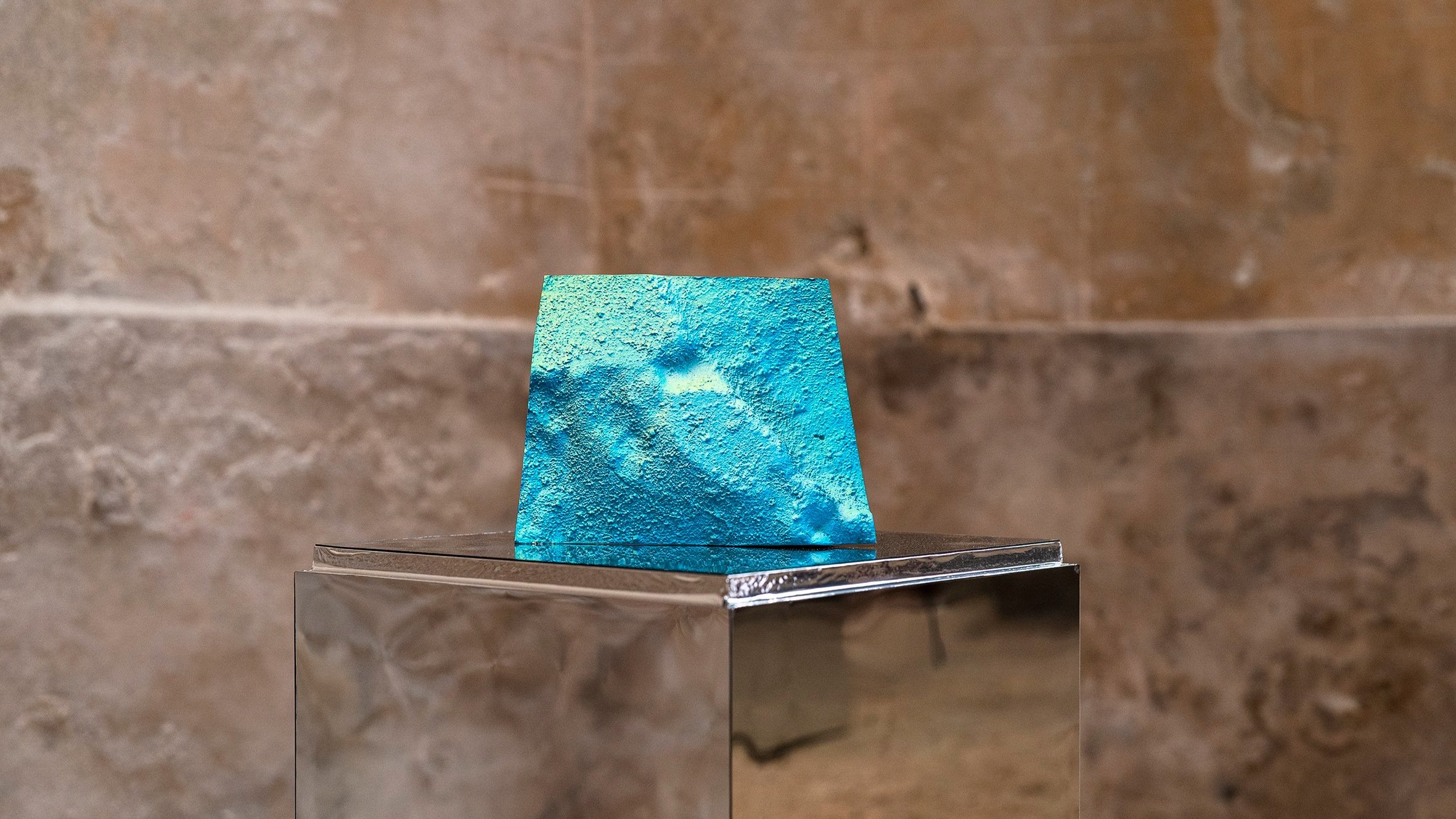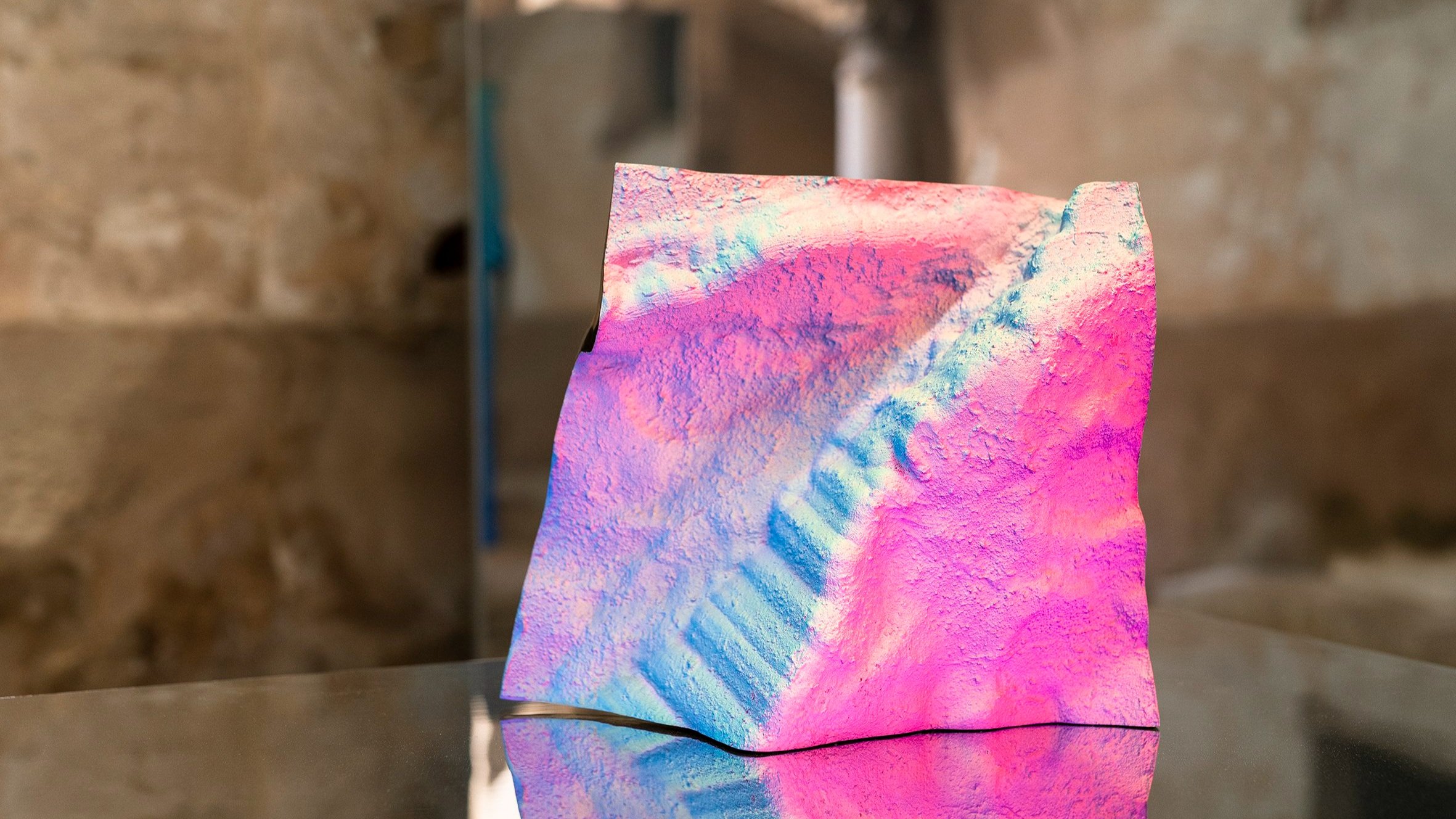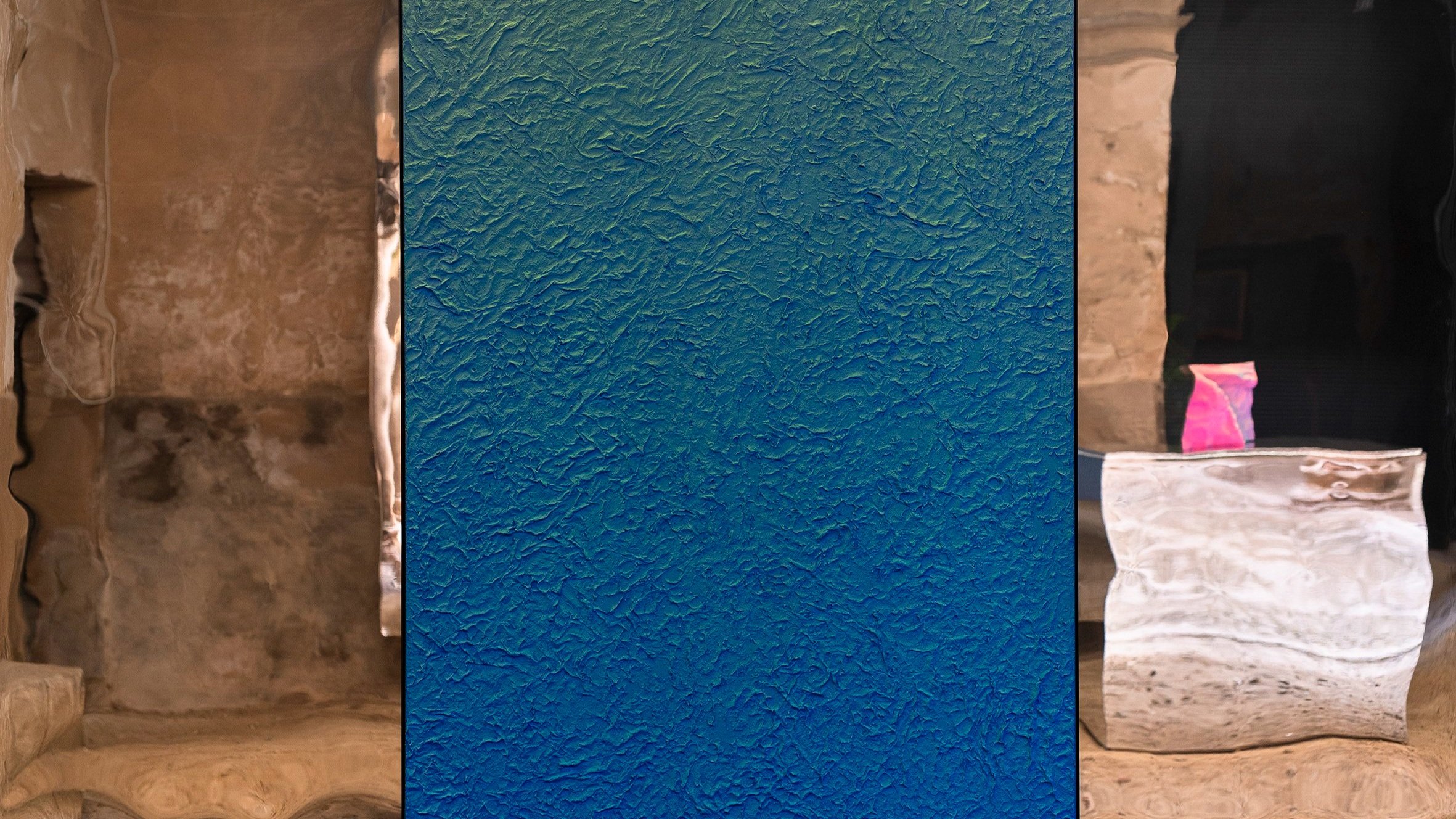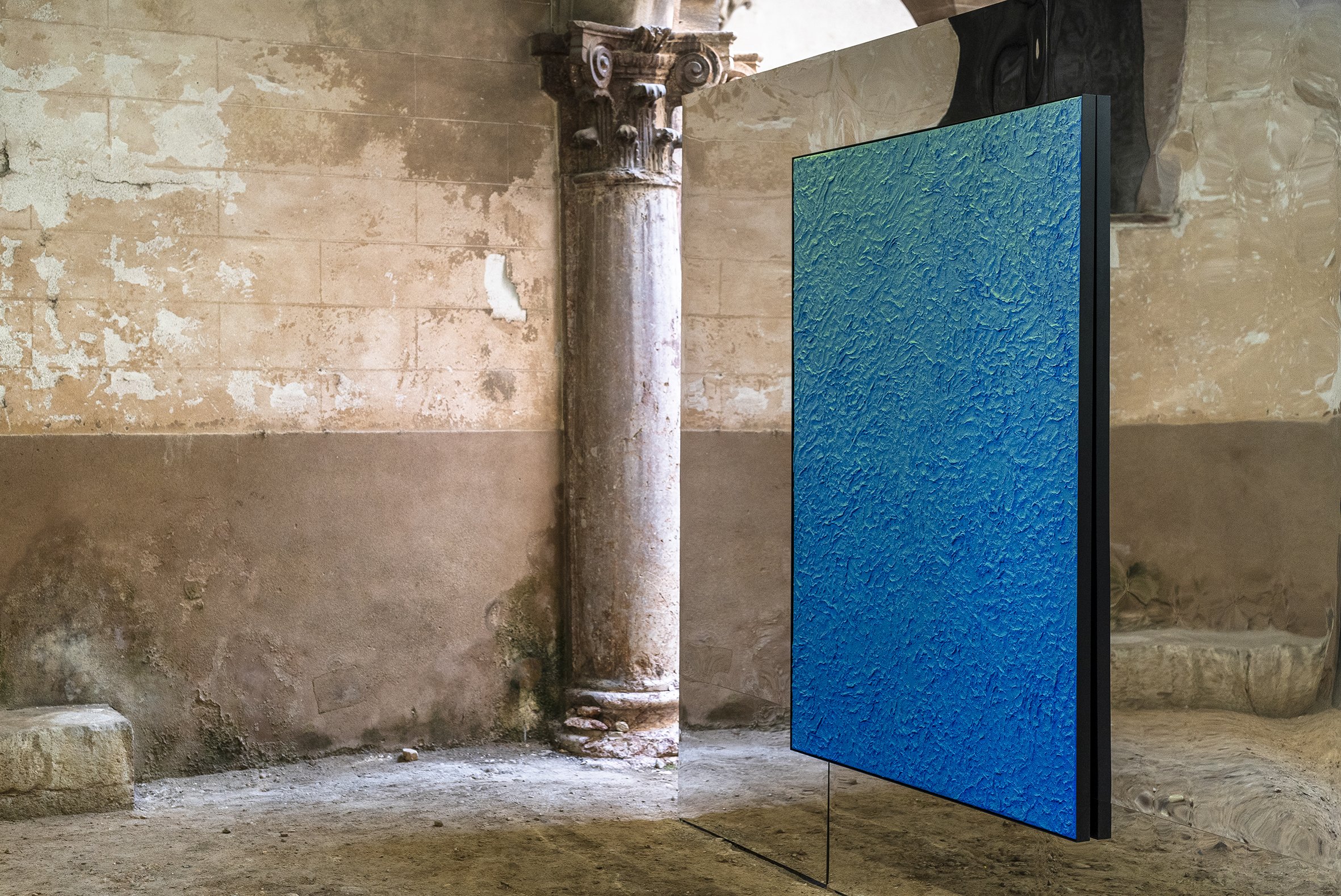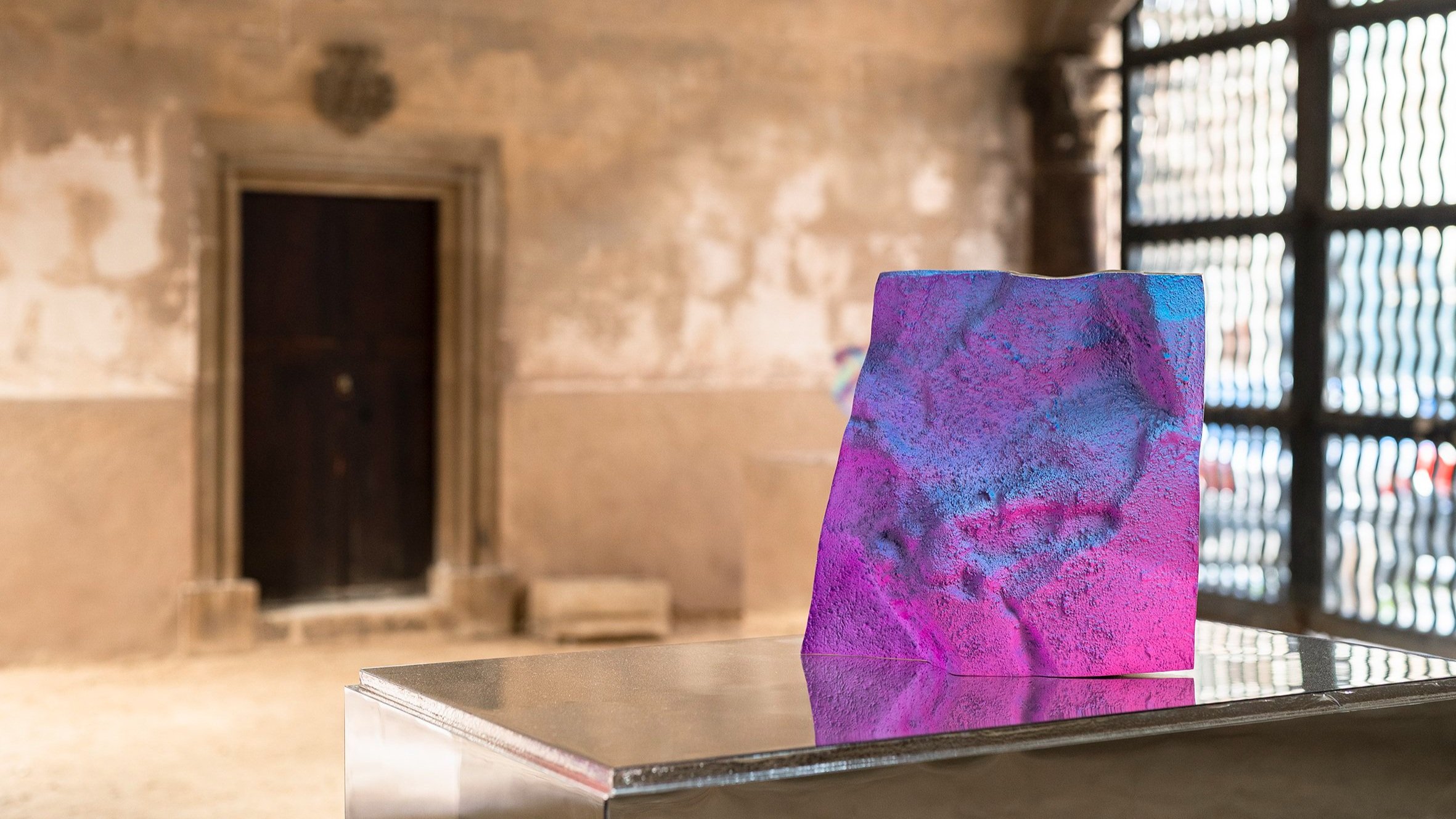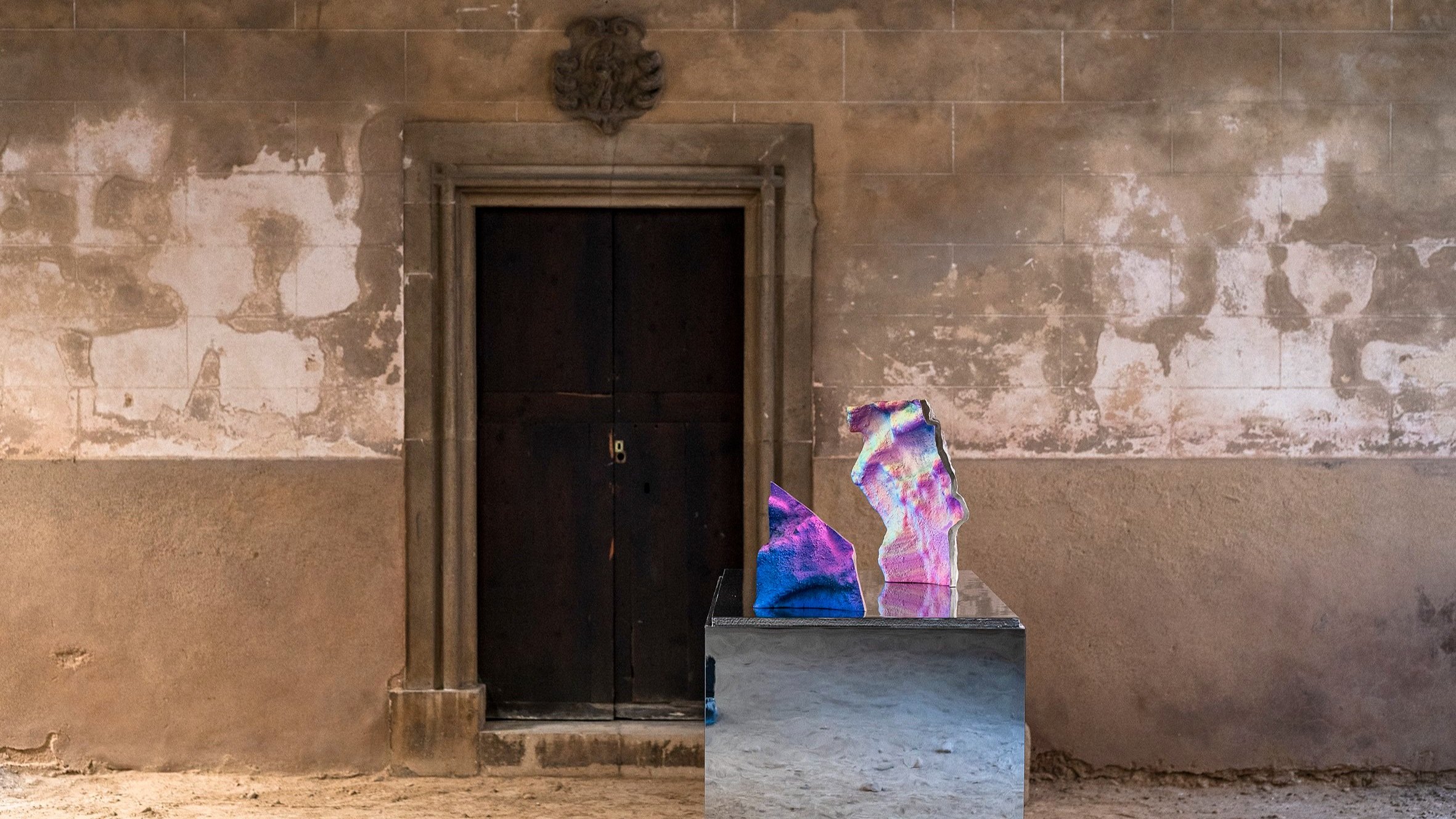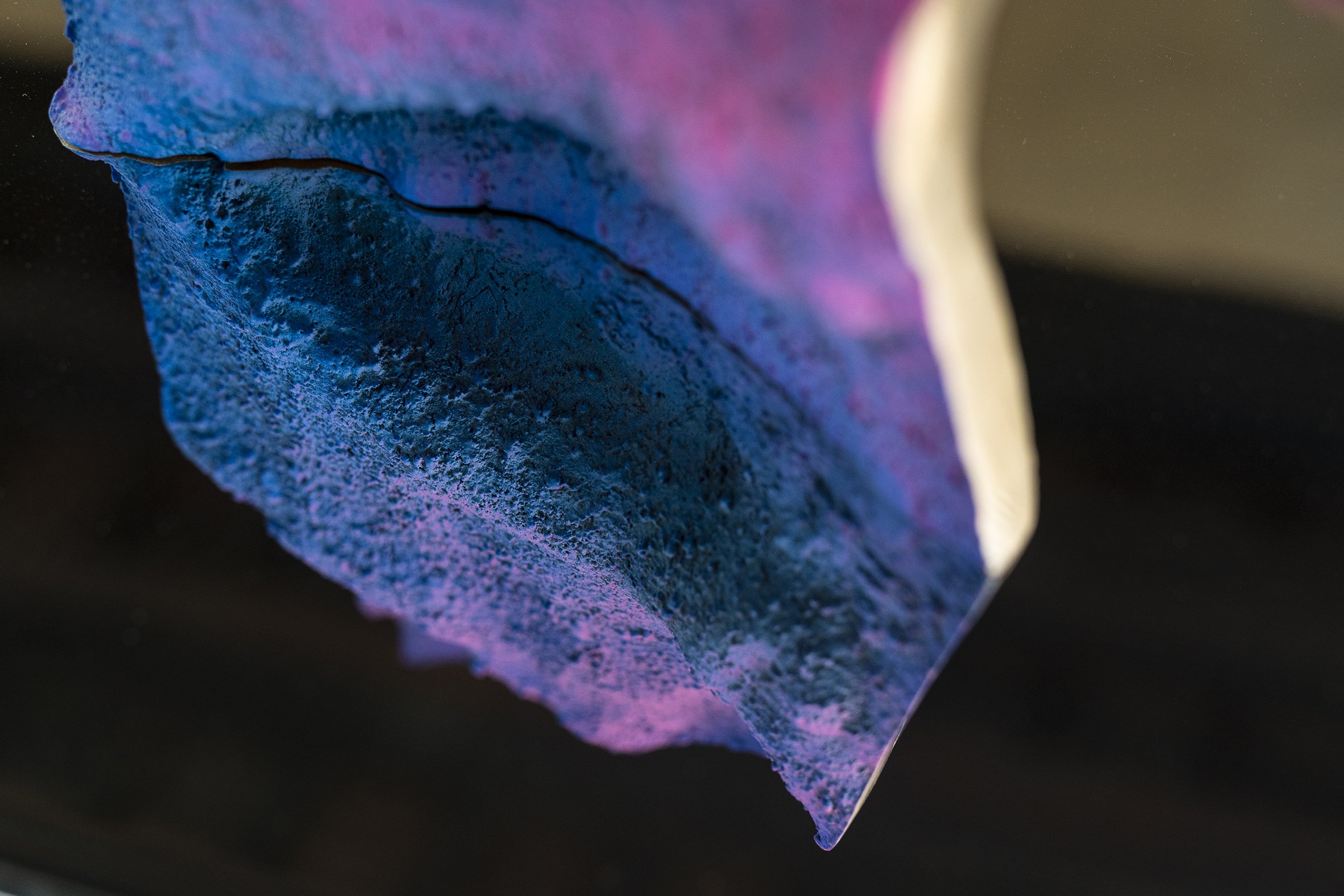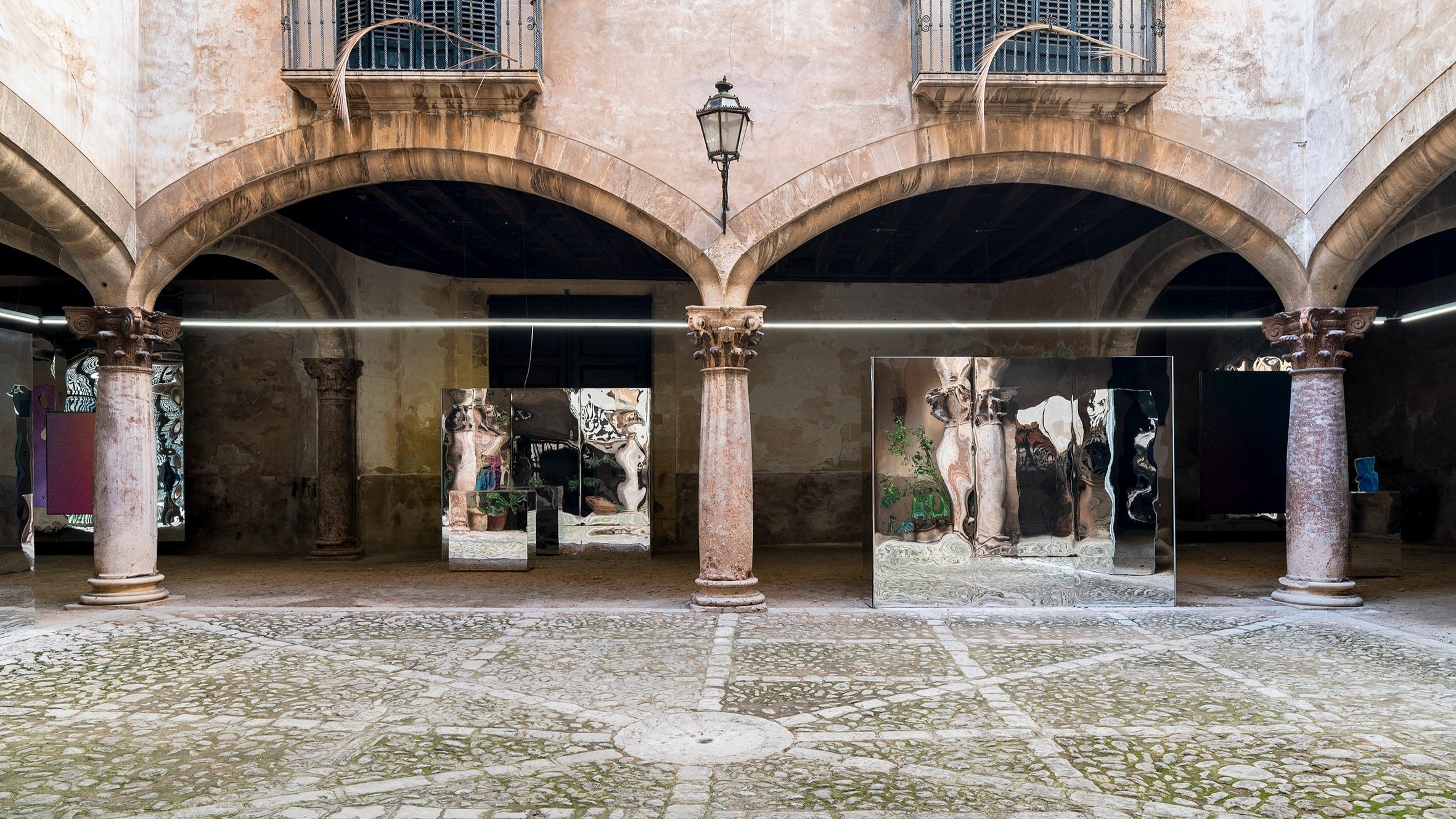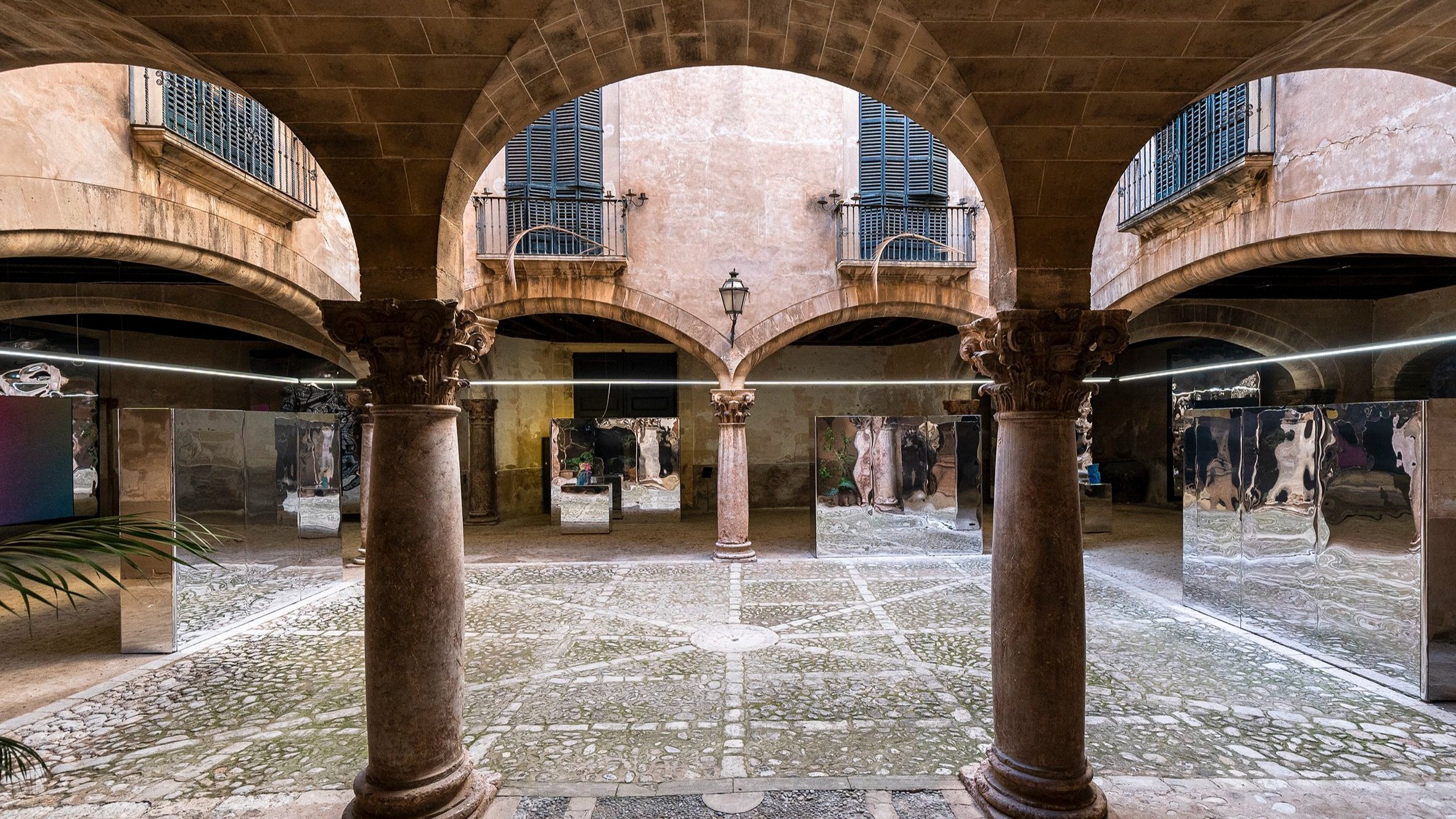
Palma de Mallorca, 2022
Michael Staniak
La Bibi Gallery at Palacio Can Vivot, Palma, April 7 - 23
Michael Staniak's work, at first glance, lends itself to misunderstanding. The seemingly abstract compositions, dominated by vivid color gradients, seem to tell a story of the digital world, about the flat surface of the screen and the frivolity of our lives on social media. The work of the Australian artist (born in 1982 in Melbourne) is often identified with Post-Internet art, a term that was released in the early 2010s to identify the work of a group of young artists whose works denote a profound influence of the content they consume on the web. Although Staniak fits this label, both generationally and at the level his dominant aesthetic, as well as himself acknowledging the influence of this fleeting and controversial artistic movement, other deeper references cast a new light on his work.
“I am part of the generation that went from primitive computers, with black screens covered in green text” says the artist, “to the hyper-digital world we live in today.” Discovering the possibilities of image editing programs like Photoshop transformed his perception of what could be created with a computer, despite the limitations of early graphical interfaces and primitive drawing programs like MS Paint. His attention, however, soon focused on color, specifically electric blue, which is established as the normative color to designate hyperlinks on a web dominated by texts and with very few images, due to bandwidth limitations. of telephone connections. His painting is thus characterized by the prominence of color, in monochromatic compositions or with subtle gradients of two or three tones. Although these expanses of color are not flat, as might be expected from an artist trained in front of the screen and who, by his own admission, identifies his compositions with the filters of image editing software, so characteristic of the work of other artists such as Cory Archangel or Artie Vierkant. In the practise of Michael Staniak, some enigmatic textures are imposed that prevent us from detaching ourselves from the materiality of the pieces and produce a visual effect that, being contradictory, is shockingly revealing.
“I have created most of my work with the intention that there are two ways to see it: in person or on a screen. When people who attend the exhibition see the pieces, they assume that they are flat, and that the texture is an effect of the software used. However, when you see the same pieces on a website, they immediately look like paintings with a physical texture to which pigments have been applied.” Staniak finds in this reverse trompe l'oeil an example of how the consumption of content on the Internet has transformed our perception of images, which can be more illusory in real life than on a computer screen. This contradiction has also marked the way in which the artist has observed his own work from the point of view of digital culture, ignoring the influence of his surroundings and the cartographic aspect of his compositions. If we consider these paintings as aerial views instead of screens, the textures that emerge from them take on new meaning that brings us closer to the notion of landscape.
In 2018, during an artist residency on Fogo Island, off the north coast of Newfoundland (Canada), Michael Staniak found himself isolated on frozen ground, at -15ºC, without the resources he usually had in his studio. He decided to take aerial shots of the landscape with a drone and discovered the similarities it had with his paintings. This experience revealed a telluric aspect in his work, more linked to the relief of a terrain than to the alignment of pixels on a screen. He creates this landscape initially in an improvised way, in a process accelerated by the setting of the materials, which he later settles and subjects to a delicate control through the laborious application of pigments. The result offers a surprising visual spectacle, in which the painting seems to shine with its own light. The connection with the material becomes even more evident in the sculptures, bronze pieces executed from a 3D model to which the same pictorial treatment is applied. In these works, one side is covered by colorful gradients of color that give it a strange weightlessness, while the other reveals the solid material it is made of. Being able to work with the synthetic resin from which he obtains the mold, the artist consciously chooses bronze for its connection with traditional sculpture. Beyond these material aspects, the shape of the sculpture itself is significant, since it is a 3D scan of a cave wall. Staniak says he is fascinated by cave paintings and how they constitute a first way of recording mankind’s own existence and belonging to a community, something that links our online presence and our digital selves on social networks.
With this huge time jump we come to the disconcerting presence of Michael Staniak's work in the patio of Ca'n Vivot, a sober, cavernous and stately space transformed by brightly colored pieces giving it an illusory appearance. In this particular context, the paintings and sculptures acquire a renewed force by escaping from the white cube and impose their presence in a stylized urban cave that they occupy just like parietal art of the Internet age. "For me, the Internet is more of a mirror than a window," says the artist, "what we see is a reflection of our interests and our personality, a mental mirror." With its reflection multiplied by the mirrors on the pedestals and the wall sections that house the works, the courtyard of Ca'n Vivot, which once served as an interface between public and private life, is once again transformed into a meeting point between two realities.
Pau Waelder
March 2022


